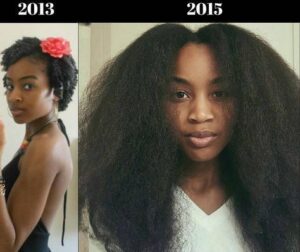What is the relation between pH and your hair health? #52

What is pH?
The acronym pH stands for “potential of hydrogen” or “power of hydrogen”. In chemistry, it is a scale that goes from 0 to 14 used to specify the acidity or basicity of an aqueous solution (water-based solutions, which means oils have no pH [1] ). Acidic solutions (solutions with higher concentrations of hydrogen ions) are measured to have lower pH values than basic or alkaline solutions (solutions with lower concentrations of hydrogen ions).
Anything between 0 and 6.9 is acidic, 7 is neutral and anything between 7.1 and 14 is considered alkaline. The pH of your hair and scalp is between 4.5 and 5.0. This acidity prevents fungi and bacteria from growing in the hair and scalp, leaving the cuticle closed and healthy.
How does pH affect the health of your hair?
Any hair strand consists of the hair shaft and the follicle. The hair shaft is the fully keratinized protein non-living part above the skin surface and is consisted of three layers: cuticle, cortex and in certain cases medulla, whilst the living part located under the scalp skin is the follicle which is the essential growth structure of the hair strand.
A healthy hair shaft’s cuticle is usually closed halfway in its natural state at the optimal range pH of 4.5-5.0, allowing nutrients (vitamins, minerals, fatty acids) and water to penetrate freely and retain internally within it. Whenever this balance is disturbed the cuticle and scalp will suffer issues such as dry hair, breakage, itchy and dry scalp, bacterial and fungal infections.
What can affect the pH of hair?
Hair texture
Your hair pattern can determine if your hair pH is more inclined to be acidic or alkaline. Straighter hair patterns are usually more acidic from root to ends falling into the optimal range pH, whilst the curlier your hair pattern is the more alkaline it will be throughout your hair length. This happens because the natural scalp sebum is acidic and is able to travel through from roots to tips easier in straight hair than through curly/kinky hair patterns twists and turns. Consequently, the curlier/kinkier your hair is the more it will be naturally dryer and more prone to breakage.
Products
Most hair products on the market are pH regulated, but it is a bit trickier than you think! Shampoos and cleansers are usually alkaline in order to raise the hair shaft’s cuticle to remove dirt and product build-up. Conditioners, deep conditioners, and leave-ins tend to be more on the acidic side in order to deposit nutrients and moisture then close the cuticle so all the goodies do not escape. Some leave-ins and detanglers are either neutral or more on the acidic side.
Pay attention to your current hair water-based products and examine their labels. If they don’t say they’re pH balanced for your hair, you should test them to see how they affect your hair. A pH value of 4 to 7 usually works well on hair.
The easiest way to test a product’s pH is by buying test strips online or from beauty supply stores. Pour your liquid product into a glass, stick the test strip into the glass for the amount of time the strip directions indicate. When you remove the strip, compare it to the diagram to find the pH of the product.
If a test indicates the product has pH outside of the 4 to 7 range, stop using it.
Heat tools and chemical treatments
The abuse of heat tools and chemical treatments such as permanent hair colourants, relaxers and bleach can cause permanent damage to your hair. When you use high heat (generally above 400°F/204°C) on your hair the protein goes through a process called denaturation in which the natural bonds that keep your hair in shape and healthy are broken. This causes hair strands to split, and tangle. Hence why is so important to keep heat usage to a minimum to avoid irreversible damage.
Once the protein on the hair shaft is damaged the cuticle will be lifted, with parts partially or fully missing (breakage) and the overall strand texture becomes coarser which will increase pH levels becoming alkaline in general.
Avoid using heat or chemical treatments if healthy long hair is your goal. Hair that has been permanently damaged by heat or chemical treatments will never return back to normal. You will have to wait for it to grow back!
Hairstyling choices
Hairstyles that require high manipulation of your hair such as tight hairstyles, daily combing, unsuitable hair tools like a fine comb on curly hair, rough takedown, or do not allow your scalp to breathe can also increase hair and scalp’s pH. Literally, anything that will damage your hair shaft will increase your hair and scalp’s pH.



